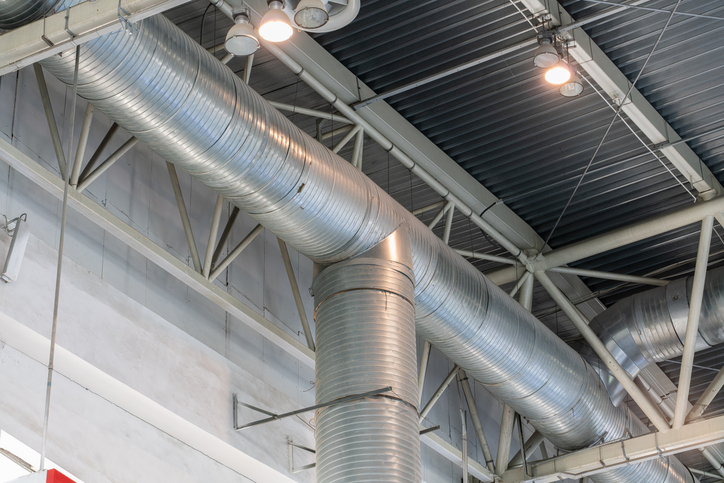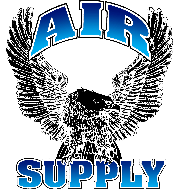Evaluating commercial airflow installation costs effectively is crucial for any business looking to enhance indoor air quality while staying within budget. With many factors influencing pricing, from system design to contractor expertise, making informed decisions requires a comprehensive understanding of the market. This guide provides detailed insights into the various elements that affect commercial ventilation installation costs, helping you develop a realistic budget and achieve a cost-effective solution for your commercial space. An efficient ventilation system is a critical component for maintaining comfort and productivity in commercial facilities. Whether you are upgrading an existing system or installing a new one, accurate cost evaluation is essential. By breaking down the factors that influence expenses, you can better plan your investment and avoid surprises during installation.
1. Understanding Your Commercial Ventilation Needs
Before diving into cost evaluations, it’s important to assess your facility’s unique ventilation requirements. Evaluate the size, layout, and occupancy of your space to determine the airflow and air quality needed for optimal performance. A thorough needs assessment helps pinpoint the type of ventilation system best suited for your operations, laying a strong foundation for cost estimation.
Additionally, consider any special requirements, such as temperature control, humidity regulation, and air filtration standards. These factors can significantly impact the system’s complexity and cost. By clearly defining your objectives, you ensure that your investment aligns with both operational needs and regulatory standards.
Finally, understanding your ventilation needs involves recognizing future growth potential and changes in facility usage. Planning for scalability can save you money in the long run by avoiding premature upgrades. A well-informed needs assessment is the first step towards an accurate and effective cost evaluation.
2. Key Factors Impacting Installation Costs
Several key factors influence the overall cost of commercial ventilation setup. One of the primary factors is the size of your facility; larger spaces typically require more extensive ductwork and additional equipment. Material quality, system complexity, and specific customization requirements also play significant roles in determining costs.
Labor is another critical element, as skilled technicians are needed to install and calibrate complex ventilation systems. The complexity of the installation, including challenges like building layout and integration with existing systems, can further drive up expenses. Understanding these factors helps you anticipate potential costs and negotiate better terms with suppliers and contractors.
Moreover, compliance with local building codes and environmental regulations can add to the expense if modifications are required. It’s essential to factor in these regulatory costs during your planning phase. By breaking down each element, you can develop a more accurate budget and avoid unexpected financial burdens.
3. Comparing Different Ventilation Systems
Comparing various ventilation systems is an essential step in evaluating installation costs effectively. Several types of commercial ventilation systems are available, ranging from traditional centralized systems to modern energy-efficient units with smart controls. Each system has its own set of features, benefits, and associated costs, making it vital to compare them based on your facility’s specific needs.
When evaluating options, consider the initial installation cost, ongoing maintenance expenses, energy consumption, and potential lifespan of the system. Energy-efficient systems may have a higher upfront cost but offer significant savings over time through reduced utility bills. Balancing these factors ensures you select a system that not only meets performance requirements but also offers long-term value.
Furthermore, look into user reviews, case studies, and expert recommendations to gauge system reliability and performance in similar commercial settings. Comprehensive comparisons enable you to choose the system that provides the best balance between cost and functionality. This informed decision-making process is key to achieving an optimal investment.
4. Selecting a Reliable Contractor
Choosing the right contractor is critical for both quality and cost-effectiveness. A reliable contractor will have a proven track record in commercial ventilation system installation and a deep understanding of local codes and standards. Their expertise can help identify cost-saving opportunities and ensure that the project is completed on time and within budget.
When selecting a contractor, request detailed estimates and compare quotes from multiple service providers. Look for certifications, customer testimonials, and previous project examples to validate their competence. A reputable contractor not only delivers quality workmanship but also offers transparent pricing, reducing the risk of hidden costs.
Contractors with specialized experience in commercial projects are more likely to provide tailored solutions that address your facility’s unique challenges. Their knowledge and skill can also help streamline the installation process, ultimately lowering labor costs. Investing time in contractor selection ensures smoother project execution and more predictable expenses.
5. Budgeting and Cost-Saving Strategies
Effective budgeting for commercial ventilation setup involves more than gathering quotes—it requires a strategic approach to cost management. Develop a comprehensive budget that includes all anticipated expenses, such as equipment, labor, permits, and contingency funds. This holistic view of costs will help you manage expenses and avoid overspending.
Explore cost-saving strategies such as phased installations, where you upgrade sections of your ventilation system over time instead of all at once. Negotiating bulk discounts on equipment and materials can also lead to significant savings. Additionally, consider energy-efficient systems that, although more expensive upfront, will lower operating costs and provide a better return on investment over time.
Reviewing past projects and industry benchmarks can offer insights into potential cost-saving measures. Embrace innovations and modern technologies that streamline installation and maintenance processes, reducing long-term operational expenses. With careful planning and strategic budgeting, you can optimize your investment and achieve superior ventilation performance without breaking the bank.
Evaluating commercial ventilation installation costs effectively is a multifaceted process that involves understanding your unique needs, analyzing key cost factors, comparing various systems, selecting a reliable contractor, and implementing smart budgeting strategies. By considering all these elements, you can develop a realistic budget that accounts for both initial expenses and long-term savings. A well-planned ventilation system not only improves indoor air quality and comfort but also enhances operational efficiency and supports regulatory compliance. With the right approach, you can ensure that your investment in commercial ventilation delivers maximum value and performance. Making informed decisions today will help you create a cost-effective, reliable, and energy-efficient solution for your commercial facility.
Optimize your budget with expert commercial ventilation installation. Count on Air Supply for reliable, cost-effective solutions. Call us at 909-980-5001 today to schedule your consultation and maximize your investment in efficient commercial airflow!





